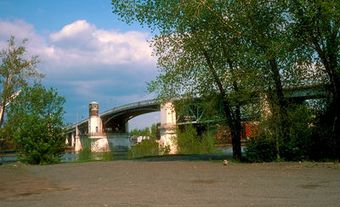Percé
Percé, Qué, Town, pop 3419 (2006c), 3614 (2001c), inc 1971. Percé is located on the southeast coast of the GASPÉ PENINSULA. The neighbouring villages of Barachois, Bridgeville, Cap-d'Espoir and St-Pierre-de-la-Malbaie were amalgamated with Percé in 1971. Its magnificent location attracts many visitors from around the world. Percé takes its name from PERCÉ ROCK, which dominates the area. Dozens of species of seabirds flock in the thousands to ÎLE BONAVENTURE, a bird sanctuary lying a few kilometres offshore.Percé's history is as old as that of NEW FRANCE. Jacques CARTIER arrived there in 1534, and European fishermen used the bay as a haven in the 16th and 17th centuries. Missionaries have served this fishing port since 1673, although the mission was destroyed in 1690 by English troops and no one lived there again until the Conquest. With the arrival of the LOYALISTS, Percé became more active.
Until the end of the 19th century, the local economy depended almost exclusively on fishing, but the region then began to attract tourists and the economy is now based largely on tourism and fishing. Leading Québec and Canadian artists have made the town a centre of artistic activity.

 Share on Facebook
Share on Facebook Share on X
Share on X Share by Email
Share by Email Share on Google Classroom
Share on Google Classroom

